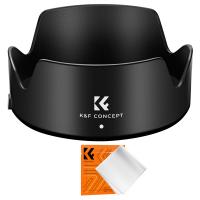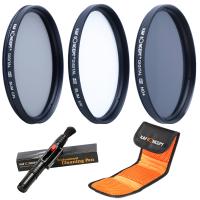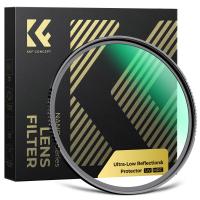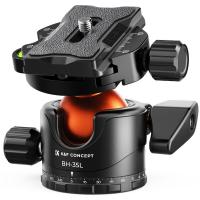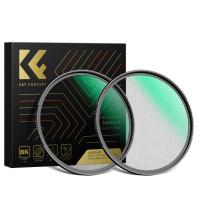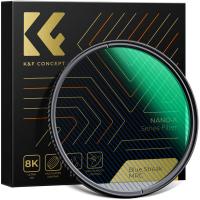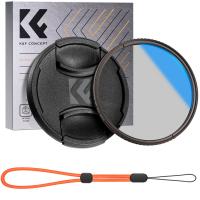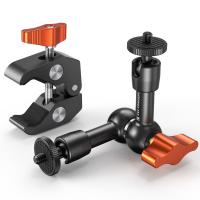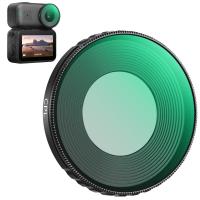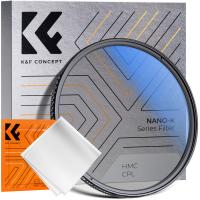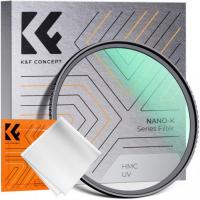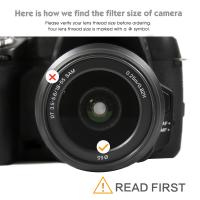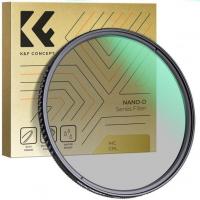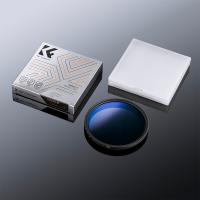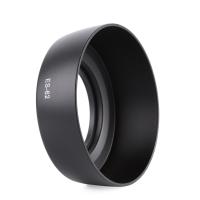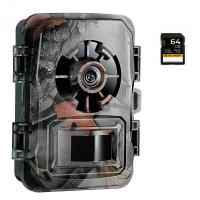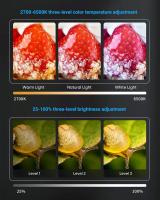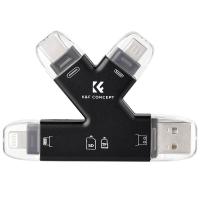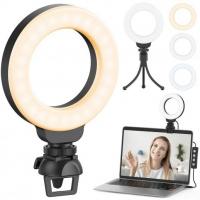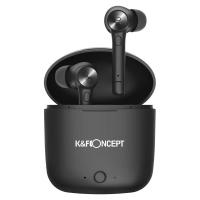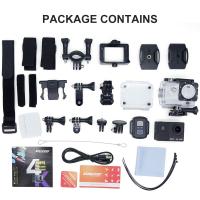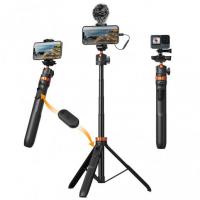What Is A Dslr Uv Filter Used For?
A DSLR UV filter is a type of camera filter that attaches to the lens of a DSLR (Digital Single-Lens Reflex) camera. Historically, UV filters were primarily designed to block ultraviolet (UV) light from entering the lens, and they were often used to prevent UV rays from causing haziness or a bluish cast in photographs, particularly in outdoor environments at high altitudes or in areas with intense sunlight. However, as modern digital sensors are less sensitive to UV light compared to film, the use of a UV filter today has shifted more toward practical reasons, such as lens protection, image clarity, and ease of post-processing.
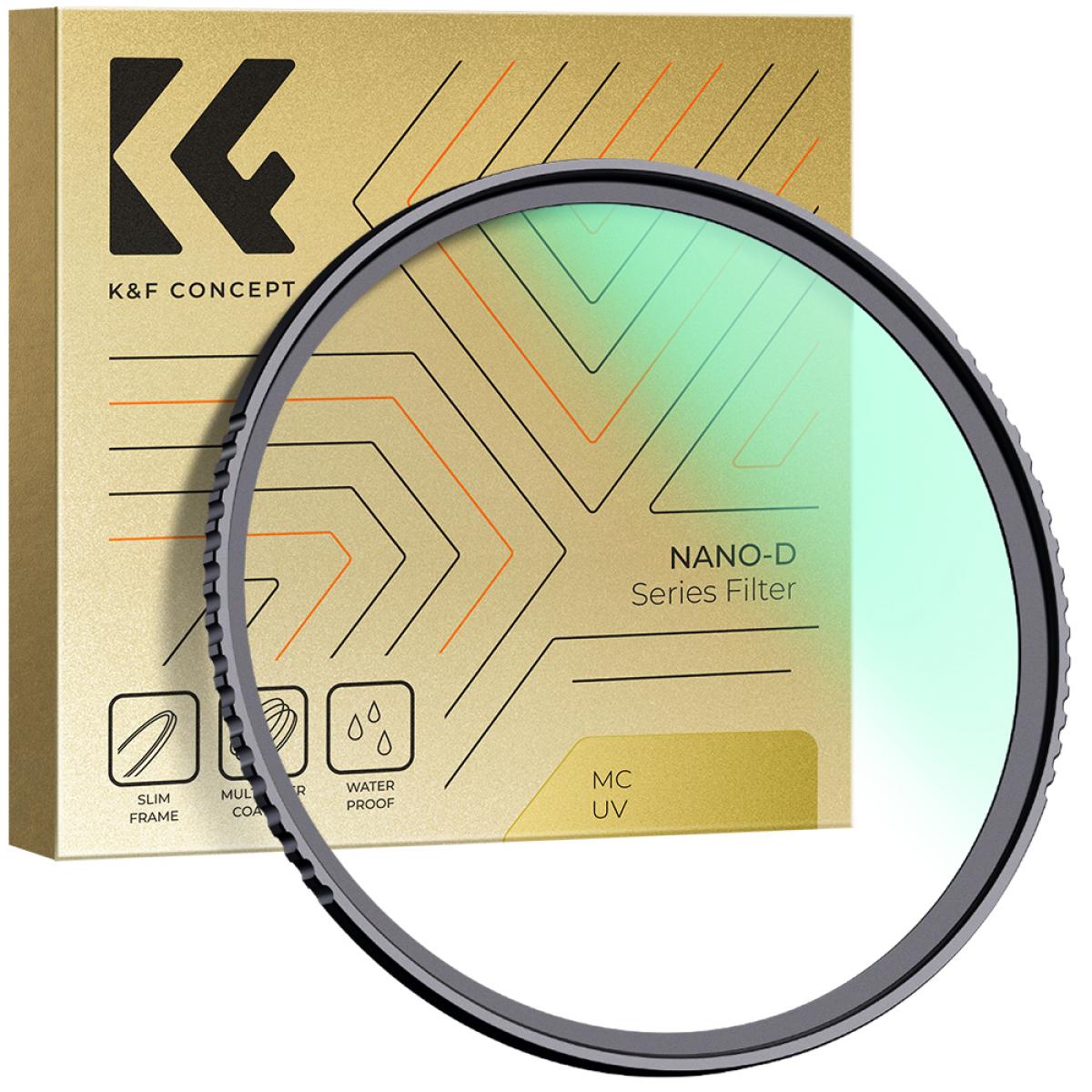
1. Historical Purpose of UV Filters
UV filters were originally designed to filter out ultraviolet light, which can create a haze in photos, especially in film photography. This was particularly noticeable in outdoor photography, where high-altitude landscapes, the sky, or areas with a lot of sunlight could introduce a blueish tint or an overall hazy effect in the image.
Film stocks used to be more sensitive to UV radiation, which led to the need for filters that would block or reduce the intensity of UV rays to prevent this unwanted effect. However, modern digital sensors have a much lower sensitivity to UV light, meaning that they do not suffer from the same issues that film did. As a result, the practical need for UV filters has diminished in terms of their original purpose.
2. Modern Use Cases for UV Filters
Although UV filters are less necessary today for blocking ultraviolet light, they are still popular in the DSLR and mirrorless camera world for a few important reasons:
2.1 Lens Protection
One of the most common reasons photographers use a UV filter today is for lens protection. DSLRs and mirrorless cameras have lenses that are often quite expensive, and their front elements are vulnerable to scratches, dust, dirt, and even accidental bumps. Attaching a UV filter to the lens creates a thin, transparent barrier that can take the brunt of any potential damage.
For example, if you're shooting in a dusty environment, at the beach with sand particles in the air, or in a location where rain is a concern, a UV filter can act as the first line of defense. It's much easier and cheaper to replace a UV filter than it is to replace or repair a scratched or damaged lens. The filter also protects the lens coating, which can sometimes be expensive to replace.
2.2 No Impact on Image Quality
The effect of a UV filter on modern digital photography is negligible in terms of image quality. High-quality UV filters are made of optical glass and feature coatings that prevent reflections and minimize the potential for distortion. When used properly, a good UV filter won't degrade your image's sharpness or contrast, and it can remain on the lens permanently without affecting your shots.
While some photographers argue that using a UV filter may introduce slight optical distortions, this is typically only noticeable when using lower-quality filters. For most practical uses, especially if you invest in a high-quality UV filter, the impact on image quality is minimal or even nonexistent.
2.3 Reduction of Flare and Ghosting
High-quality UV filters can sometimes reduce flare and ghosting effects in certain lighting conditions. While these effects are often more associated with the lens itself, a UV filter can act as an additional barrier that helps to reduce unwanted reflections and light scattering within the lens. This is especially true for filters that have anti-reflective coatings, which can enhance contrast and minimize lens flare during sunrise or sunset shoots, or when shooting directly into a light source.
2.4 Ease of Post-Processing
Using a UV filter can also help make post-processing easier by reducing certain color shifts or unwanted light effects. In some cases, UV filters can help in producing clearer skies or more vibrant outdoor shots by reducing haze in certain atmospheric conditions. While this isn't as pronounced as the benefits seen in film photography, there can still be subtle advantages in certain lighting situations, especially in outdoor and landscape photography.
3. UV Filters and Their Alternatives
While the use of a UV filter can be beneficial, it's worth noting that it's not always the best choice for every photographer. Depending on the shooting conditions, the lens type, and the desired outcome, you may opt for different types of filters or even shoot without a UV filter altogether. Here are some alternatives:
3.1 Clear Filters
Clear filters are essentially UV filters without the UV light-blocking effect. These filters are designed primarily for lens protection without affecting the image in any way. They are made of clear optical glass and offer similar benefits in terms of protection from dust, scratches, and other potential hazards.
3.2 Polarizing Filters
A polarizing filter is another popular choice for photographers, especially those shooting landscapes, architecture, or outdoor scenes. Polarizers reduce reflections from water, glass, or wet surfaces and enhance contrast in the sky by darkening blue skies and making clouds stand out more dramatically. Polarizing filters are particularly useful in situations where you want to manage reflections or increase the saturation of certain elements, such as foliage or skies.
3.3 Neutral Density (ND) Filters
Neutral density filters are used to reduce the amount of light entering the lens without affecting the color balance. They are particularly useful for controlling exposure in bright conditions, allowing you to use slower shutter speeds or wider apertures for creative effects, such as long-exposure photography in bright daylight or shallow depth of field.
3.4 Lens Hoods
While not technically a filter, a lens hood can also serve as a protective element for your lens. Lens hoods help block unwanted light from entering the lens, reducing the potential for flare and ghosting. They also provide physical protection for the lens, shielding it from bumps and scrapes. Many photographers choose to use lens hoods instead of UV filters for lens protection, as hoods offer better overall coverage and prevent direct contact with the lens.
4. Choosing the Right UV Filter
If you've decided to use a UV filter for lens protection or other practical reasons, there are a few factors to consider when choosing the right filter:
4.1 Quality of Glass
The quality of the optical glass in the UV filter is crucial for ensuring that the filter doesn’t negatively impact image quality. Cheap filters made from lower-quality materials can introduce unwanted color casts, reduce sharpness, or cause distortion. Look for filters made from high-quality optical glass, as these will maintain image clarity and protect your lens without introducing noticeable optical artifacts.
4.2 Coatings
Modern UV filters often come with coatings that help to reduce reflections, lens flare, and ghosting. Multicoated filters are generally preferred because they provide better light transmission and offer additional protection against scratches and smudges. Some premium UV filters even feature water- and oil-repellent coatings, which make it easier to clean the filter without leaving streaks or marks.
4.3 Size Compatibility
Filters come in a variety of sizes, so it’s important to choose a UV filter that matches the diameter of your camera lens. Be sure to check the size (often indicated in millimeters) before purchasing. Many photographers buy multiple filters in different sizes to fit various lenses, or they opt for filter step-up or step-down rings that allow them to use the same filter across different lenses with varying diameters.
4.4 Filter Brand
Well-known filter brands, such as B+W, Hoya, and Tiffen, are trusted by many professional photographers due to their reputation for producing high-quality filters that maintain image integrity. While generic or off-brand filters may be cheaper, they often compromise on optical quality, which can ultimately affect your photographs.
5. Conclusion
In conclusion, the use of a UV filter on a DSLR camera lens has evolved significantly over the years. While it was once essential for blocking ultraviolet light and preventing haze in outdoor and high-altitude conditions, modern digital sensors are much less susceptible to these issues. Today, UV filters are primarily used for lens protection, reducing flare, and enhancing image quality in certain lighting situations.
Ultimately, whether or not you should use a UV filter comes down to your specific needs as a photographer. If you're looking to protect your lens from damage while maintaining the highest possible image quality, a high-quality UV filter can be a valuable addition to your gear. However, for certain types of photography, alternatives like polarizing or ND filters may provide more substantial benefits.

